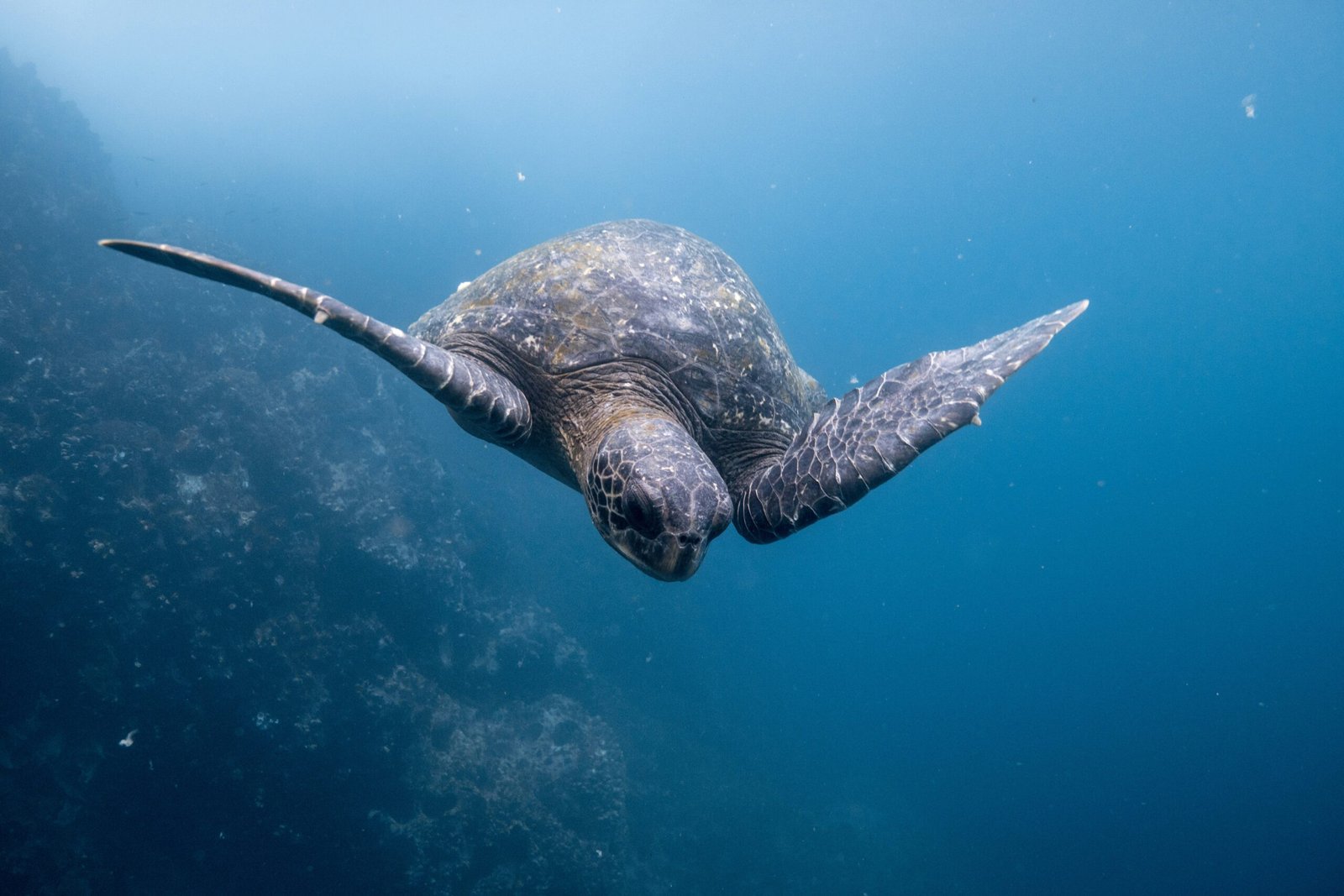
The Galápagos Islands, located in Ecuador, are a unique and fascinating destination for nature lovers and adventure seekers. This archipelago of volcanic islands is renowned for its rich biodiversity and its role in Charles Darwin’s theory of evolution. The islands are home to a wide variety of plant and animal species, many of which are found nowhere else on Earth. From giant tortoises to marine iguanas, the Galápagos Islands offer a chance to witness the wonders of nature up close and personal.
The history of the Galápagos Islands is as intriguing as its wildlife. The islands were formed through a series of volcanic eruptions that occurred millions of years ago. Over time, these volcanic eruptions created a unique ecosystem that allowed for the development of diverse plant and animal species. It wasn’t until the 16th century that the islands were discovered by Spanish explorers, who named them after the giant tortoises that inhabit the area. Since then, the Galápagos Islands have attracted scientists, researchers, and nature enthusiasts from around the world.
Charles Darwin’s visit to the Galápagos Islands in 1835 played a pivotal role in the development of his theory of evolution. During his time on the islands, Darwin observed the unique characteristics of the finches and tortoises that inhabit the area. He noticed that each island had its own distinct species of finch, with variations in beak size and shape that were adapted to the specific food sources available on each island. This observation led Darwin to propose that species evolve over time through a process of natural selection, where those individuals with traits best suited to their environment are more likely to survive and reproduce.
Today, the Galápagos Islands continue to be a living laboratory for scientists and researchers studying evolution and ecology. The islands are protected as a national park and a UNESCO World Heritage site, ensuring that the unique flora and fauna of the area remain preserved for future generations. Visitors to the Galápagos Islands can explore the various islands and their diverse ecosystems through guided tours and cruises. Snorkeling, diving, and hiking are popular activities that allow visitors to get up close and personal with the islands’ incredible wildlife.
In addition to its natural wonders, the Galápagos Islands also offer a rich cultural experience. The islands are home to a small population of people who have adapted to the unique environment and way of life. Visitors can learn about the history and traditions of the local communities, and even participate in activities such as fishing and farming. The Galápagos Islands truly offer a once-in-a-lifetime experience that combines adventure, education, and cultural immersion.
The Galápagos Islands, with their rich history and unique ecosystem, have captivated the imagination of scientists, explorers, and nature enthusiasts for centuries. After their accidental discovery in 1535 by the Bishop of Panama, Tomás de Berlanga, the islands remained largely untouched and uninhabited for several centuries. It wasn’t until the 19th century that Ecuador officially claimed the Galápagos Islands as part of its territory, recognizing their strategic importance and potential for scientific exploration.
During the 19th and early 20th centuries, the Galápagos Islands became a frequent stop for whalers, pirates, and buccaneers. These visitors, attracted by the islands’ abundant marine life and natural resources, often left their mark on the landscape. However, it wasn’t until the arrival of Charles Darwin in 1835 that the true significance of the Galápagos Islands began to be understood.
Darwin’s visit to the Galápagos Islands during his famous voyage on the HMS Beagle provided him with invaluable insights into the process of evolution. The unique wildlife and diverse ecosystems of the islands inspired Darwin’s theory of natural selection, which would later revolutionize the field of biology. Darwin’s observations and subsequent publication of “On the Origin of Species” brought international attention to the Galápagos Islands, solidifying their reputation as a living laboratory of evolution.
Recognizing the need to protect this extraordinary natural heritage, the Ecuadorian government declared the Galápagos Islands a national park in 1959. This designation aimed to preserve the islands’ fragile ecosystems and ensure the survival of its iconic species, such as the Galápagos giant tortoises, marine iguanas, and blue-footed boobies.
Since then, the Galápagos Islands have become a mecca for researchers, conservationists, and eco-tourists from around the world. The Galápagos National Park, in collaboration with various international organizations, has implemented strict regulations to manage tourism and protect the islands’ delicate balance. These measures include limiting the number of visitors, enforcing strict biosecurity protocols, and promoting sustainable practices.
Today, the Galápagos Islands continue to inspire awe and wonder. Their isolated location, unique geological formations, and endemic species make them a true natural treasure. As we strive to understand and protect these extraordinary islands, the Galápagos serve as a reminder of the interconnectedness of all life on Earth and the importance of preserving our planet’s biodiversity.
Wildlife and Biodiversity
The Galápagos Islands are home to an incredible array of wildlife, much of which is found nowhere else on earth. The isolation of the islands has allowed species to evolve in unique ways, leading to the development of endemic species that are found only in the Galápagos.
One of the most famous residents of the Galápagos Islands is the giant tortoise. These magnificent creatures can live for over 100 years and are a symbol of the islands’ biodiversity. Their slow and steady nature has captivated the hearts of many visitors, who marvel at their impressive size and longevity. These gentle giants roam freely across the islands, grazing on vegetation and playing a vital role in maintaining the delicate balance of the ecosystem.
In addition to the giant tortoises, the Galápagos Islands are also home to a wide variety of other unique species. Marine iguanas, for example, have adapted to their surroundings by developing the ability to swim and feed on marine algae. These remarkable reptiles can be seen sunning themselves on the rocky shores, their dark coloration allowing them to absorb heat more efficiently. Visitors can witness their incredible underwater foraging abilities as they dive into the ocean to search for food.
The islands are also a haven for birdwatchers, with a multitude of avian species to be observed. The blue-footed booby, known for its vibrant blue feet, performs an elaborate courtship dance to attract a mate. Visitors can witness this mesmerizing display as the male raises and lowers his feet in a synchronized manner, showcasing his bright blue appendages. The Galápagos penguin, one of the few penguin species found in the Northern Hemisphere, can also be spotted on the islands. These charismatic birds waddle along the volcanic shores, their sleek bodies adapted for swimming in the cool waters.
For those who enjoy marine life, the Galápagos Islands offer unparalleled opportunities for snorkeling and scuba diving. The crystal-clear waters teem with an abundance of fish species, including colorful tropical fish and larger pelagic species. Schools of hammerhead sharks can be seen patrolling the depths, while playful sea lions dart in and out of the coral reefs. Visitors can swim alongside these graceful creatures, marveling at their agility and underwater acrobatics.
The Galápagos Islands are truly a wildlife enthusiast’s paradise. Whether you are a nature lover, an adventurer, or simply seeking a unique travel experience, the islands offer a glimpse into a world untouched by time. The biodiversity found here is a testament to the power of evolution and the importance of preserving our natural habitats. As you explore the islands, you will be immersed in a living laboratory where you can witness the wonders of nature up close and gain a deeper appreciation for the delicate balance of life on our planet.
Aside from these popular activities, there are many other attractions that visitors can enjoy in the Galápagos Islands. One such attraction is the famous Tortuga Bay, located on Santa Cruz Island. This pristine beach stretches for over a kilometer and offers visitors the opportunity to relax on its powdery white sand or take a refreshing swim in its turquoise waters.
Another must-visit attraction is the Sierra Negra Volcano on Isabela Island. This active volcano boasts one of the largest calderas in the world, measuring over six miles in diameter. Hiking to the rim of the caldera provides breathtaking views of the surrounding landscape and the opportunity to witness the powerful forces of nature at work.
For wildlife enthusiasts, a visit to North Seymour Island is highly recommended. This small island is home to a variety of bird species, including the iconic blue-footed boobies and magnificent frigatebirds. Visitors can witness these birds in their natural habitat, engaging in their unique mating rituals and nesting behaviors.
Additionally, the Galápagos Islands offer incredible opportunities for wildlife photography. Whether it’s capturing the playful antics of sea lions on Española Island or photographing the vibrant plumage of the Galápagos penguins on Fernandina Island, there is no shortage of stunning subjects to capture on camera.
Furthermore, the Galápagos Islands are a paradise for water sports enthusiasts. Kayaking, paddleboarding, and surfing are popular activities that allow visitors to explore the islands’ pristine coastline and experience the thrill of riding the waves.
Finally, a visit to the Galápagos Islands would not be complete without experiencing the unique cuisine of the region. From fresh seafood dishes like ceviche and grilled fish to traditional Ecuadorian specialties like encebollado and locro de papa, there is a wide range of flavors to tantalize your taste buds.
Overall, the Galápagos Islands offer a plethora of activities and attractions that cater to a variety of interests. Whether you’re an adventure seeker, a nature lover, or a food enthusiast, there is something for everyone to enjoy in this enchanting archipelago.
Conservation Efforts
Preserving the unique biodiversity of the Galápagos Islands is of utmost importance. The Ecuadorian government, in collaboration with various organizations, has implemented strict regulations to protect the fragile ecosystem of the islands.
Visitors to the Galápagos Islands are required to follow a set of guidelines to minimize their impact on the environment. These guidelines include staying on designated trails, not disturbing wildlife, and properly disposing of waste.
Furthermore, the Galápagos National Park has implemented measures to control the number of visitors to the islands, ensuring that tourism remains sustainable and does not harm the delicate ecosystem.
One of the key conservation efforts in the Galápagos Islands is the eradication of invasive species. Invasive species pose a significant threat to the native flora and fauna of the islands. The introduction of non-native species, such as rats and goats, has resulted in the destruction of native habitats and the displacement of native species.
To combat this issue, the Galápagos National Park has implemented aggressive eradication programs. These programs involve the removal of invasive species from the islands and the restoration of native habitats. For example, the park has successfully eradicated feral goats from several islands, allowing the vegetation to recover and creating suitable habitats for native species.
Another important conservation effort is the protection of marine ecosystems surrounding the Galápagos Islands. The waters surrounding the islands are home to a diverse range of marine life, including sea turtles, sharks, and marine iguanas.
The Galápagos Marine Reserve, established in 1998, is one of the largest marine protected areas in the world. It covers an area of over 133,000 square kilometers and is designed to safeguard the unique marine biodiversity of the Galápagos Islands.
The reserve is strictly regulated, with fishing restrictions and limits on the number of boats allowed in certain areas. These measures help to prevent overfishing and ensure the long-term sustainability of the marine ecosystem.
In addition to these conservation efforts, there are ongoing research and monitoring programs in place to assess the health of the Galápagos Islands’ ecosystem. Scientists and researchers from around the world collaborate with local authorities to study the islands’ unique wildlife and ecosystems.
Through these efforts, valuable data is collected, which helps inform future conservation strategies and management plans. This research is crucial for understanding the impacts of human activities on the islands and developing effective conservation measures.
In conclusion, the conservation efforts in the Galápagos Islands are comprehensive and multifaceted. From strict regulations for visitors to eradication programs for invasive species and the establishment of marine protected areas, the Ecuadorian government and various organizations are committed to preserving the unique biodiversity of these iconic islands.



